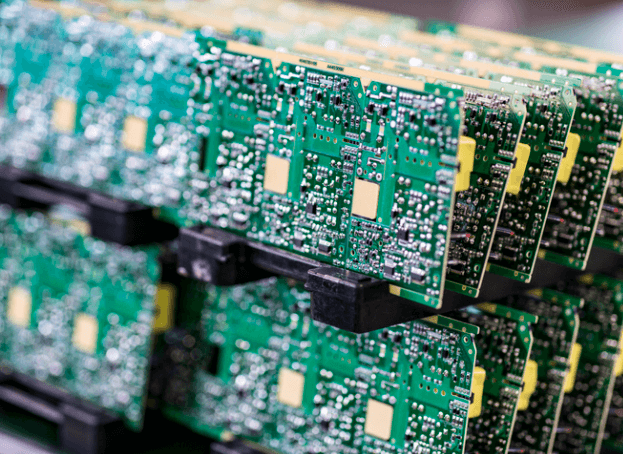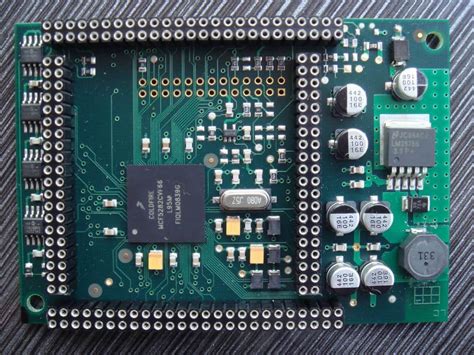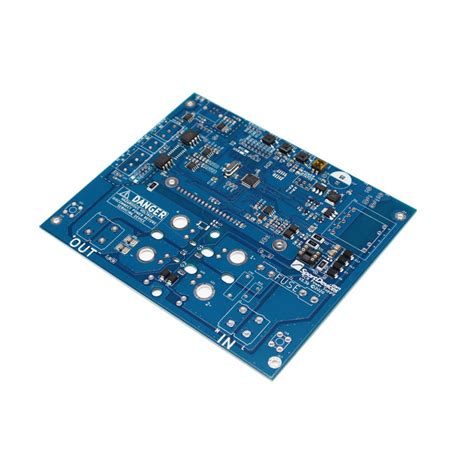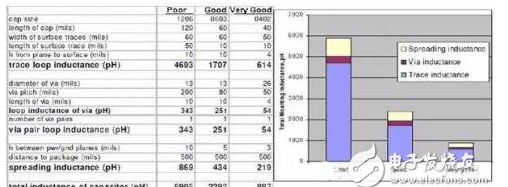Printed and flexible electronics
Innovations In Printed Electronics: Transforming Modern Technology
Printed and flexible electronics represent a significant leap forward in the realm of modern technology, offering a myriad of applications that were once the stuff of science fiction. These innovations are not only transforming the way electronic devices are manufactured but also expanding the possibilities for their use in various industries.
The advent of printed electronics, which involves the use of printing techniques to create electronic circuits on various substrates, has opened up new avenues for cost-effective and scalable production. This method leverages traditional printing processes, such as inkjet, screen, and gravure printing, to deposit conductive inks onto flexible materials like plastic, paper, or fabric. Consequently, this approach allows for the creation of lightweight, thin, and flexible electronic components that can be integrated into a wide range of products.
One of the most compelling advantages of printed electronics is their potential to reduce manufacturing costs.
Traditional electronic manufacturing processes often involve complex and expensive steps, including photolithography and vacuum deposition. In contrast, printed electronics can be produced using roll-to-roll printing techniques, which are not only faster but also more economical. This cost efficiency is particularly beneficial for the production of large-area electronics, such as solar panels and display screens, where the ability to print on flexible substrates can lead to significant savings.
Moreover, the flexibility of printed electronics enables the development of innovative applications that were previously unattainable with rigid components.
For instance, flexible displays and e-paper are revolutionizing the consumer electronics market by offering lightweight, bendable screens that can be incorporated into wearable devices, foldable smartphones, and even smart clothing. These advancements are not only enhancing user experience but also paving the way for new form factors and functionalities in electronic devices.
In addition to consumer electronics, printed and flexible electronics are making significant inroads into the healthcare sector.
Wearable health monitors, which can be seamlessly integrated into clothing or directly onto the skin, are providing real-time data on vital signs, thereby enabling continuous health monitoring and early detection of medical conditions. These devices are particularly valuable for managing chronic diseases and improving patient outcomes through personalized healthcare.
Furthermore, the integration of printed electronics into the Internet of Things (IoT) is driving the development of smart environments.
Flexible sensors and RFID tags can be embedded into everyday objects, transforming them into connected devices that communicate with each other and with central systems. This connectivity is enhancing various applications, from smart packaging that monitors the freshness of perishable goods to intelligent infrastructure that optimizes energy consumption in buildings.
Despite the numerous advantages, the field of printed and flexible electronics also faces several challenges that need to be addressed to fully realize its potential.
One of the primary concerns is the durability and reliability of printed components, especially in harsh environments. Researchers are actively working on developing new materials and printing techniques to improve the performance and longevity of these devices. Additionally, there is a need for standardization in the industry to ensure compatibility and interoperability among different printed electronic components.
In conclusion, printed and flexible electronics are poised to revolutionize modern technology by offering cost-effective, versatile, and innovative solutions across various sectors. As research and development continue to advance, the potential applications for these technologies will only expand, driving further integration into our daily lives and transforming the way we interact with electronic devices. The future of electronics is undoubtedly flexible, and the innovations in this field are set to shape the technological landscape for years to come.

The Future Of Flexible Electronics: Applications And Advancements
The future of flexible electronics is poised to revolutionize various industries, offering unprecedented versatility and innovation. As advancements in materials science and manufacturing techniques continue to evolve, the potential applications of flexible electronics are expanding rapidly. This burgeoning field encompasses a wide range of devices, from wearable technology to medical sensors, and even extends to large-scale applications such as flexible solar panels and electronic paper.
One of the most promising areas of flexible electronics is in the realm of wearable technology.
These devices, which can be seamlessly integrated into clothing or worn directly on the skin, offer a level of convenience and functionality that rigid electronics cannot match. For instance, flexible sensors embedded in athletic wear can monitor vital signs and physical performance in real-time, providing athletes with valuable data to optimize their training regimens. Similarly, medical wearables can continuously track a patient’s health metrics, enabling early detection of potential issues and reducing the need for frequent hospital visits.
In addition to wearables, flexible electronics are making significant strides in the healthcare sector.
Flexible medical sensors, which can conform to the contours of the human body, offer a non-invasive means of monitoring various physiological parameters. These sensors can be used for continuous glucose monitoring in diabetic patients, or to track heart rate and other vital signs in real-time. The ability to produce these sensors using printed electronics techniques also makes them more cost-effective and accessible, potentially transforming patient care and diagnostics.
The energy sector is another area where flexible electronics are making a substantial impact.
Flexible solar panels, for example, can be integrated into a variety of surfaces, from building facades to vehicle roofs, providing a versatile and efficient means of harnessing solar energy. These panels are not only lightweight and easy to install but also offer the potential for significant cost savings in both production and deployment. Furthermore, advancements in printed electronics have enabled the development of flexible batteries and supercapacitors, which can be used to power a wide range of devices, from small wearables to larger electronic systems.
In the realm of consumer electronics, flexible displays are garnering considerable attention.
These displays, which can be bent, folded, or rolled, offer a new level of portability and convenience. For instance, foldable smartphones and tablets can provide users with larger screens without compromising on portability. Additionally, electronic paper, which mimics the appearance of traditional paper, offers a more comfortable reading experience and can be used in a variety of applications, from e-readers to digital signage.
The advancements in materials science that underpin flexible electronics are also worth noting.
The development of conductive inks and flexible substrates has been crucial in enabling the production of these devices. Conductive inks, which can be printed onto various surfaces using techniques such as inkjet or screen printing, allow for the creation of intricate electronic circuits on flexible materials. These materials, which include polymers and other flexible substrates, provide the necessary durability and flexibility for the devices to function effectively in a range of environments.
As we look to the future, the continued evolution of flexible electronics promises to bring about even more innovative applications and advancements. The integration of flexible electronics into everyday objects and environments will undoubtedly lead to new possibilities and conveniences, transforming the way we interact with technology. With ongoing research and development, the potential for flexible electronics to enhance various aspects of our lives is immense, heralding a new era of technological innovation.

Environmental Impact Of Printed Electronics: Sustainability And Recycling
Printed and flexible electronics represent a significant advancement in technology, offering numerous benefits such as lightweight, cost-effective, and versatile applications. However, as with any technological innovation, it is crucial to consider the environmental impact associated with their production, use, and disposal. The sustainability and recycling of printed electronics are paramount to ensuring that these advancements do not come at the expense of our planet.
To begin with, the production of printed electronics involves the use of various materials, including conductive inks, substrates, and encapsulants.
Conductive inks often contain metals such as silver, copper, and carbon-based materials, which can pose environmental challenges if not managed properly. The extraction and processing of these metals can lead to significant environmental degradation, including habitat destruction, water pollution, and greenhouse gas emissions. Therefore, it is essential to develop and adopt more sustainable materials and production processes. For instance, researchers are exploring the use of biodegradable and renewable materials, such as cellulose-based substrates and organic conductive inks, which can reduce the environmental footprint of printed electronics.
Moreover, the energy consumption associated with the manufacturing of printed electronics is another critical factor to consider.
Traditional electronic manufacturing processes are energy-intensive, contributing to carbon emissions and climate change. In contrast, printed electronics can be produced using additive manufacturing techniques, which are generally more energy-efficient. These techniques involve depositing materials layer by layer, minimizing waste and reducing the overall energy required for production. By optimizing these processes and utilizing renewable energy sources, the environmental impact of printed electronics can be further mitigated.
The end-of-life management of printed electronics is equally important in addressing their environmental impact.
As the use of printed electronics becomes more widespread, the volume of electronic waste (e-waste) is expected to increase. E-waste poses significant environmental and health risks due to the presence of hazardous substances, such as heavy metals and toxic chemicals. Therefore, effective recycling and disposal strategies are crucial to prevent these materials from contaminating the environment.
One approach to improving the sustainability of printed electronics is the development of eco-design principles.
These principles focus on designing products with their entire lifecycle in mind, from production to disposal. For example, designing printed electronics with easily separable components can facilitate recycling and reduce the complexity of the recycling process. Additionally, incorporating biodegradable materials can ensure that printed electronics break down more easily in the environment, reducing the long-term impact of e-waste.
Furthermore, advancements in recycling technologies are essential to address the challenges associated with printed electronics.
Traditional recycling methods for electronic waste are often not suitable for printed electronics due to their unique material compositions and structures. Therefore, innovative recycling techniques, such as chemical recycling and pyrolysis, are being explored to recover valuable materials from printed electronics efficiently. These methods can help to close the loop in the lifecycle of printed electronics, ensuring that materials are reused and repurposed rather than ending up in landfills.
In conclusion, while printed and flexible electronics offer numerous advantages, it is imperative to address their environmental impact through sustainable production practices and effective recycling strategies. By adopting eco-design principles, utilizing renewable materials, and advancing recycling technologies, the environmental footprint of printed electronics can be significantly reduced. As the industry continues to grow, a commitment to sustainability will be essential to ensure that the benefits of printed electronics do not come at the expense of our planet.

Flexible Electronics In Wearable Technology: Trends And Developments
Flexible electronics have emerged as a transformative force in the realm of wearable technology, offering unprecedented opportunities for innovation and integration. As the demand for more sophisticated, lightweight, and adaptable devices continues to grow, the development of flexible electronics has become a focal point for researchers and industry leaders alike. This burgeoning field is characterized by its ability to conform to various shapes and surfaces, thereby enabling the creation of devices that are not only functional but also comfortable and aesthetically pleasing.
One of the most significant trends in flexible electronics is the integration of these technologies into wearable health monitoring systems.
These systems are designed to provide continuous, real-time data on various physiological parameters, such as heart rate, body temperature, and blood oxygen levels. The flexibility of these electronic components allows them to be seamlessly incorporated into fabrics or directly onto the skin, ensuring that they do not impede the wearer’s daily activities. This has profound implications for the healthcare industry, as it enables more accurate and consistent monitoring of patients, potentially leading to earlier detection of medical conditions and more personalized treatment plans.
In addition to health monitoring, flexible electronics are also making strides in the field of fitness and sports.
Wearable devices equipped with flexible sensors can track a wide range of metrics, including movement, posture, and muscle activity. This data can be invaluable for athletes looking to optimize their performance and reduce the risk of injury. Moreover, the lightweight and unobtrusive nature of these devices means that they can be worn comfortably for extended periods, making them ideal for both professional athletes and fitness enthusiasts.
Another area where flexible electronics are making a significant impact is in the development of smart textiles.
These innovative fabrics are embedded with electronic components that can perform various functions, such as heating, lighting, and even energy harvesting. For instance, garments equipped with flexible solar panels can generate electricity from sunlight, providing a sustainable power source for other wearable devices. Similarly, clothing with integrated heating elements can help regulate body temperature in extreme weather conditions, enhancing comfort and safety for the wearer.
The advancements in flexible electronics are also paving the way for more sophisticated and interactive user interfaces.
Flexible displays, for example, can be incorporated into wearable devices to provide users with a more intuitive and engaging experience. These displays can be bent, folded, or rolled up without compromising their functionality, making them ideal for applications where space and weight are at a premium. Furthermore, the development of flexible touch sensors and haptic feedback systems is enabling more responsive and immersive interactions, which could revolutionize the way we interact with our devices.
Despite the promising developments in flexible electronics, there are still several challenges that need to be addressed to fully realize their potential.
One of the primary concerns is the durability and reliability of these components, particularly when subjected to repeated bending and stretching. Researchers are actively exploring new materials and manufacturing techniques to enhance the robustness of flexible electronics, ensuring that they can withstand the rigors of everyday use. Additionally, there is a need for more efficient power management solutions to extend the battery life of wearable devices, as well as more secure methods for data transmission and storage to protect user privacy.
In conclusion, the integration of flexible electronics into wearable technology represents a significant leap forward in the quest for more versatile, functional, and user-friendly devices. As research and development in this field continue to advance, we can expect to see even more innovative applications and products that will further enhance our daily lives. The future of wearable technology is undoubtedly flexible, and the possibilities are as boundless as the imagination of those who dare to explore them.







